
The ZX Spectrum is an 8-bit home computer developed and marketed by Sinclair Research. Considered one of the most influential computers ever made, it is also one of the best-selling British computers ever, with over five million units sold. It was released in the United Kingdom on 23 April 1982, and around the world in the following years, most notably in Europe, the United States, and Eastern Bloc countries.
The Multiface was a hardware peripheral released by Romantic Robot for several 1980s home computers. The primary function of the device was to dump the computer's memory to external storage. Pressing a red button on the Multiface activated it. As most games of the era did not have a save game feature, the Multiface allowed players to save their position by saving a loadable snapshot of the game. Home computer software of the early 1980s was typically loaded into RAM in one go, with copy protection measures concentrating the loading phase or just after it. The snapshot feature could be used after copy protection routines had been executed, to create a backup that was effectively unprotected against unauthorised distribution. Later models of the Multiface mitigated this by requiring the device to be present when re-loading the dumps into memory, making the dumps useless to people without a Multiface. Software producers also reacted to the threat by using routines that would prevent execution of the product if it detected that a Multiface was present and by loading the software in multiple parts, thus requiring the presence of the original, copy-protected media.
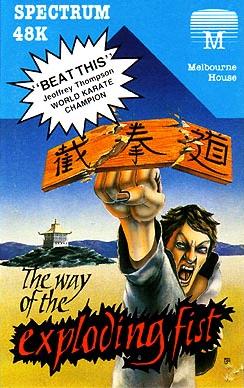
The Way of the Exploding Fist is a 1985 fighting game based on Japanese martial arts developed by Beam Software, by a team consisting of Gregg Barnett, Bruce Bayley, Neil Brennan and David Johnston. Originally developed on the Commodore 64 and published in June 1985 by Melbourne House, ports were made for Amstrad CPC, ZX Spectrum, BBC Micro, Acorn Electron and Commodore 16.

Crash, stylized as CRASH, is a magazine dedicated to the ZX Spectrum home computer, primarily focused on games. It was published from 1984 to 1991 by Newsfield Publications Ltd until their liquidation, and then until 1992 by Europress. It was relaunched as a quarterly A5 magazine in December 2020 with the backing of the original founders.
CDS Software was an independent publisher and developer of computer game software based in Doncaster, South Yorkshire, UK.

Lenslok is a copy protection mechanism found in some computer games and other software on the Atari 8-bit computers, Commodore 64, ZX Spectrum, Sinclair QL, MSX and Amstrad CPC. It was created by John Frost, an inventor and electronics consultant, and marketed by ASAP Developments, a subsidiary of J Rothschild Holdings. The first game to use it was Elite for the ZX Spectrum.
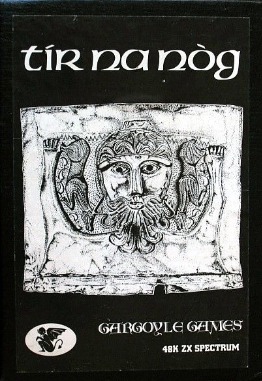
Tir Na Nog is a video game that was published in 1984 by Gargoyle Games for the ZX Spectrum and Amstrad CPC. A Commodore 64 version was released in 1985. It is loosely based on Celtic mythology. Tir Na Nog was positively reviewed by critics. A prequel - Dun Darach - was published a year later.
Elite Systems is a British video game developer and publisher established in 1984 as Richard Wilcox Software. It is known for producing home computer conversions of popular arcade games. Elite also published compilations of games on the Hit-Pak label and budget price re-releases on the Encore label.
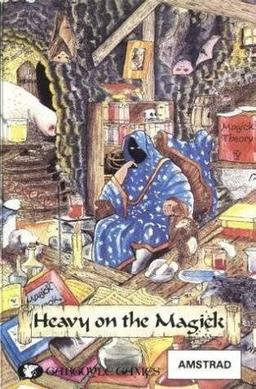
Heavy on the Magick is a video game for Amstrad CPC and ZX Spectrum published in 1986 by Gargoyle Games. The game's influences draw heavily from the occult, with the Master Therion in the plot below a reference to Aleister Crowley. To finish the game, the player must invoke numerous demons who are based on their "real" counterparts, e.g. Belezbar is based on Beelzebub.

Beta BASIC is a BASIC interpreter for the Sinclair Research ZX Spectrum microcomputer, written by Dr Andrew Wright in 1983 and sold by his one-man software house BetaSoft. BetaSoft also produced a regular newsletter/magazine, BetaNews.

Bug-Byte Software Ltd. was a video game company founded in 1980 in Liverpool, initially producing software for the Acorn Atom and ZX80. Bug-Byte's first hit was Don Priestley's Mazogs which was one of the most successful titles for the ZX81. In 1983, it published Manic Miner, considered to be one of the most influential platform games of all time. The company went into liquidation in 1985 but their name and logo were purchased by Argus Press PLC for use as a budget software label.
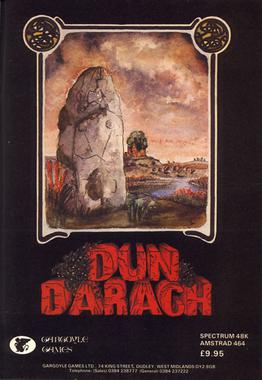
Dun Darach is an arcade adventure developed and published in 1985 by Gargoyle Games for the ZX Spectrum and Amstrad CPC computers. It is a prequel to the 1984 game Tir Na Nog. The plot has Celtic hero Cuchulainn on a search to find his companion Lóeg in the mysterious city of Dun Darach. Inspiration for the game came from the works of Fritz Leiber and Michael Moorcock.
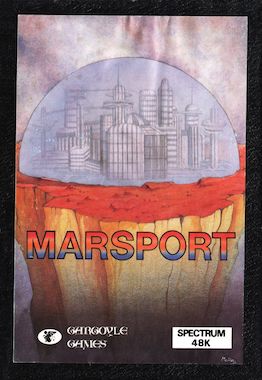
Marsport is a science fiction computer game that was released for the ZX Spectrum and Amstrad CPC home computers in 1985. It was published by Gargoyle Games in the United Kingdom and Dro Soft in Spain. Marsport was intended to be the first part of a trilogy called "The Siege of Earth" but parts two and three were not forthcoming. Because of this, it is often regarded as being part of an unofficial trilogy alongside Tir Na Nog and Dun Darach due to its having very similar gameplay to these titles. Marsport also has similarities to the later Gargoyle game Heavy on the Magick.
Thorn EMI Computer Software was a British video games software house set up in the early 1980s as part of the now-defunct British conglomerate Thorn EMI. They released a number of games in the early 1980s, initially for the Atari 8-bit computers, and later for the ZX Spectrum, Commodore 64 and VIC-20 computers. In 1984, the Thorn EMI name was dropped in favour of Creative Sparks as the company were reportedly unhappy with their image in the video games market. A budget label, Sparklers, was created in early 1985 to publish titles at £2.50. Later in 1985, Creative Sparks, Sparklers and the distribution company, Creative Sparks Distribution (CSD) gained independence from Thorn EMI after a management buyout.
Faster Than Light (FTL) was a software publishing label established by UK video game publisher Gargoyle Games. The aim was for FTL to publish arcade-style games, while Gargoyle would concentrate on its core business of adventure games.

Scooby-Doo is a video game based on the television franchise of the same name. The game was developed in 1986 by Gargoyle Games for the ZX Spectrum, Amstrad CPC, Commodore 64, and Commodore Plus/4.

Hydrofool is an isometric 3D action-adventure game released by FTL in 1987 for the ZX Spectrum and Amstrad CPC. It is the sequel to Sweevo's World. The game music was composed by Rob Hubbard, with the title track based on Abe Holzmann's "Blaze Away!"
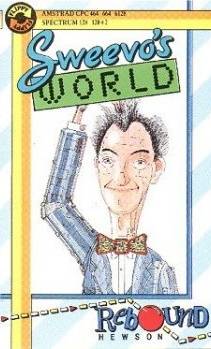
Sweevo's World is an isometric 3D arcade adventure game released by Gargoyle Games in 1986 for the ZX Spectrum and Amstrad CPC. An enhanced version for the Spectrum 128K was also released, titled Sweevo's Whirled. The game was followed by a sequel, Hydrofool.

Light Force is a 1986 vertically scrolling shooter designed by Greg Follis and Roy Carter, developed by their company Gargoyle Games, and published under their Faster Than Light imprint. It was released for the Amstrad CPC, Commodore 64, and ZX Spectrum platforms.
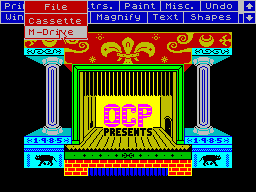
OCP Art Studio or Art Studio was a popular bitmap graphics editor for home computers released in 1985, created by Oxford Computer Publishing and written by James Hutchby.















